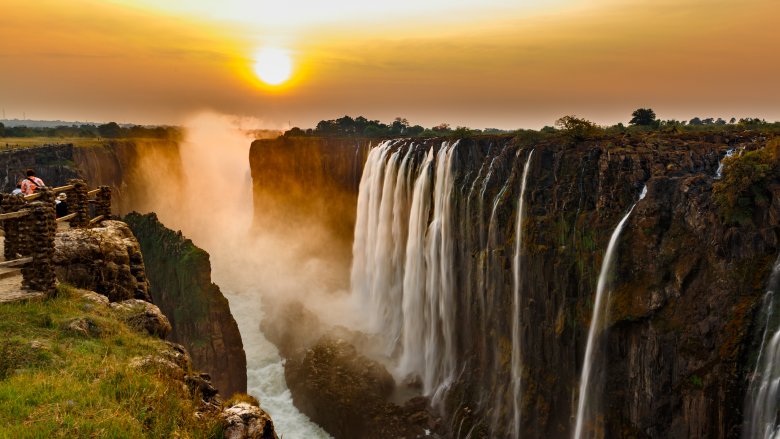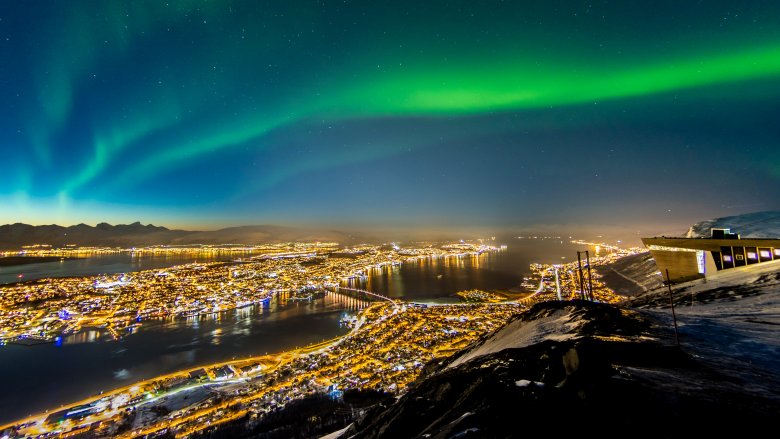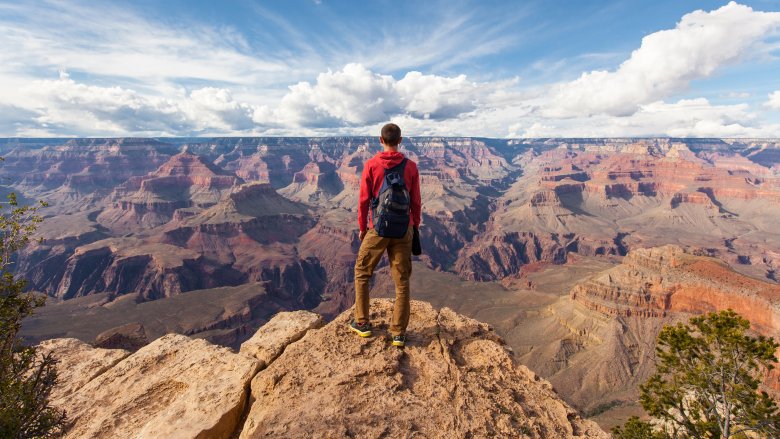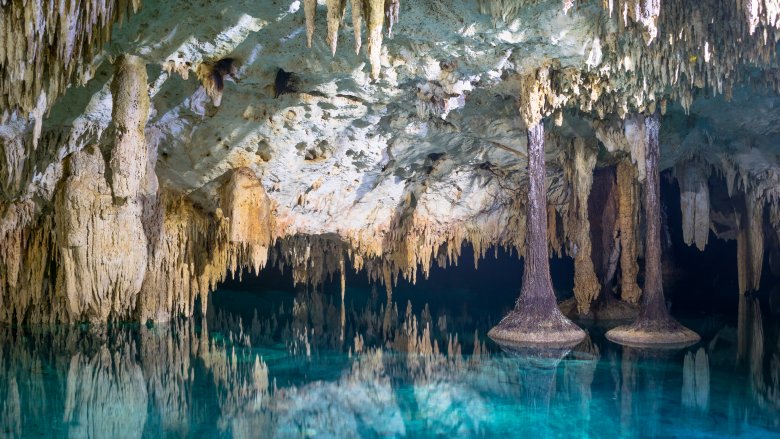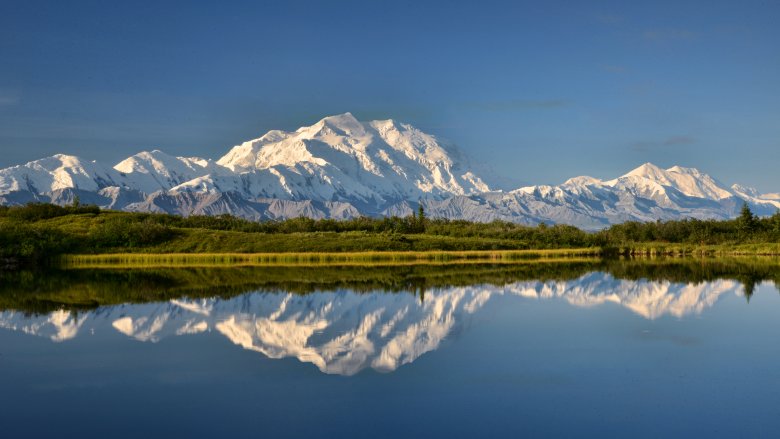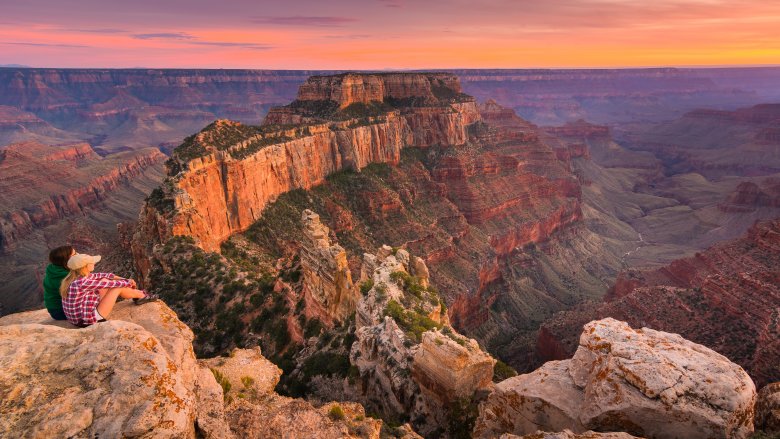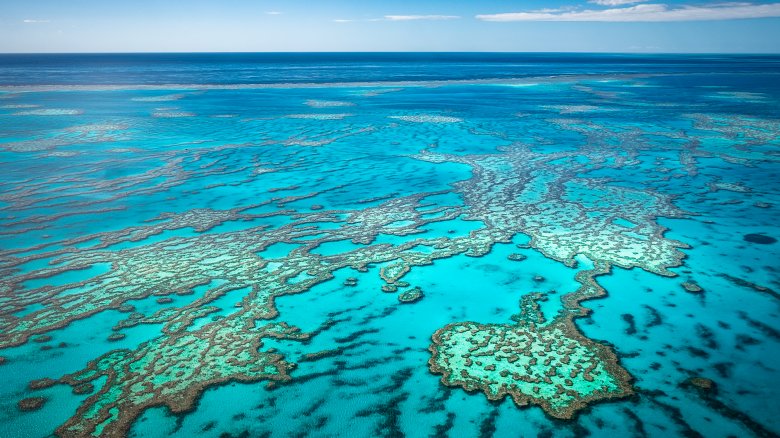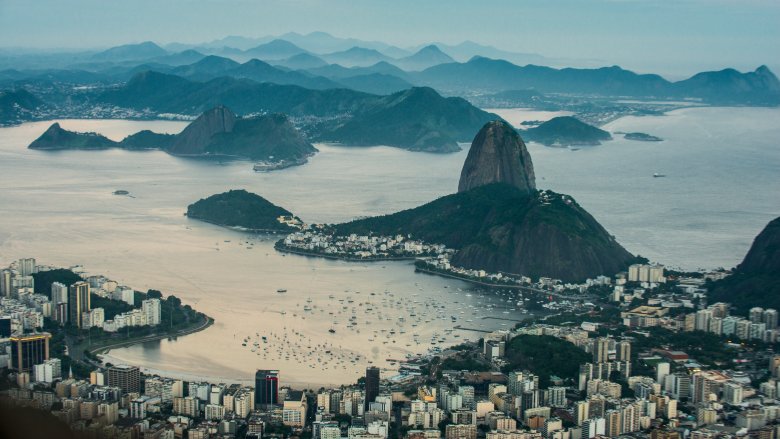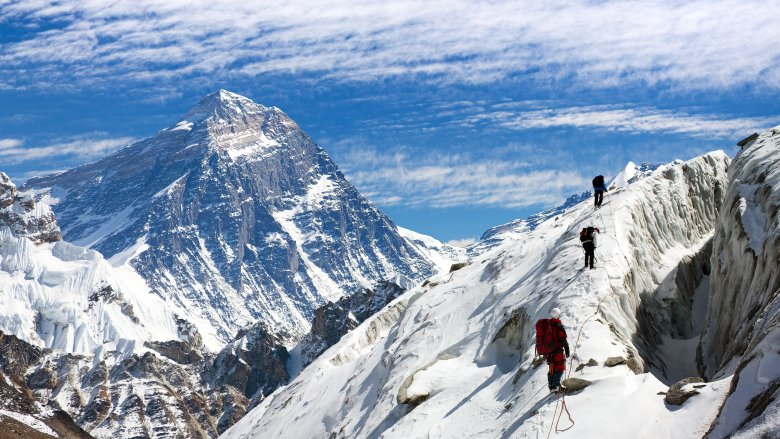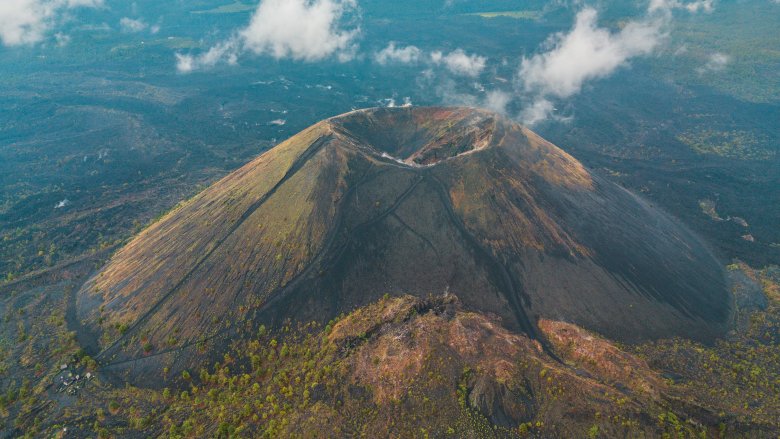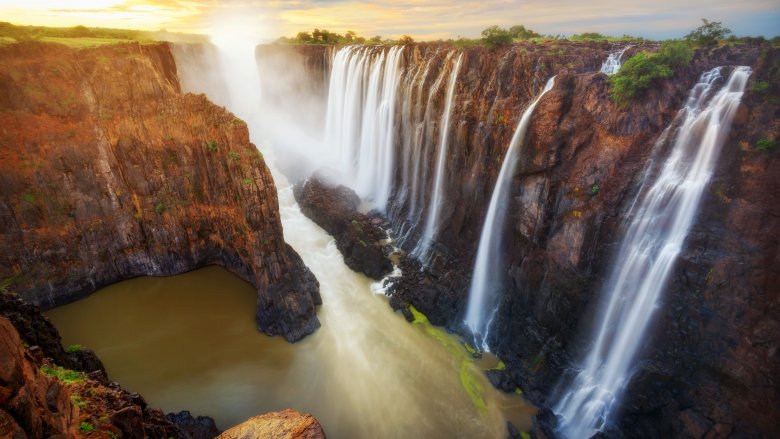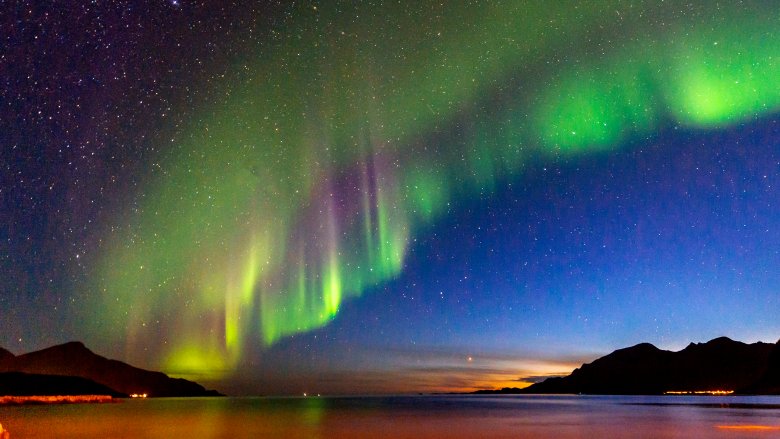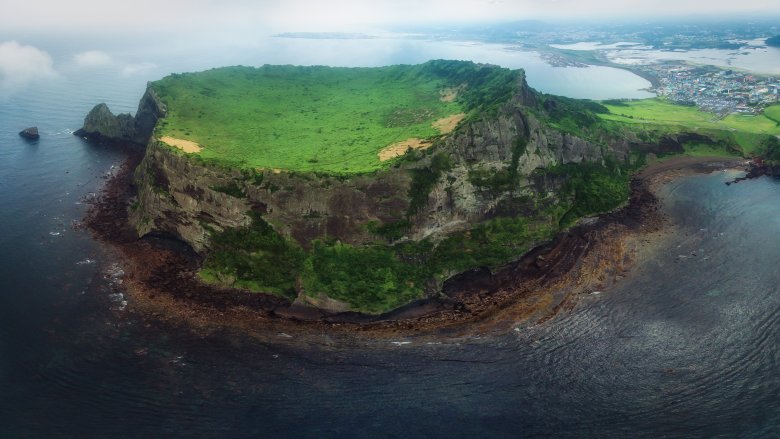The Untold Truth Of The Seven Wonders Of The Natural World
Everyone has heard of the Seven Wonders of the World. And if you were intrigued the first time you heard the term, it was probably very shortly followed by the great sense of disappointment you felt when you learned that only one of the original Seven Wonders is actually still standing—the Great Pyramid of Giza in Egypt. The rest of them have all been lost to time, so they may have been wonderful once but they certainly weren't sturdy or anything.
Since that original list was presented to the world all those centuries ago, modern people have seized on the "Seven Wonders" idea and taken it to all kinds of new places. We now have a new list of modern wonders, which includes places you can actually visit like the Golden Gate Bridge and the CN Tower. Or if you're looking for a grittier version, the Seven Wonders of the Industrial World includes Bazalgette's London sewers, so, you know, enjoy your vacation.
Most of us appreciate natural beauty before we appreciate sewers, though, so this list will focus on the official Seven Wonders of the Natural World—those places built by nature that astonish us with the kind of beauty that man made objects will never have.
The list was born 2,222 years after the original Seven Wonders one
The first list of Seven Wonders was put forth by Philo of Byzantium in 225 BC. For some reason, no one thought of publishing a list of natural wonders until 2,222 years after that, when CNN suddenly went, "Hey, why isn't there a list of natural wonders?" So in 1997 the news network took it upon itself to compile a list of the world's most awe-inspiring natural places or things, and it must have been a pretty challenging task. According to Mother Nature Network, they weren't even sure they were going to limit the number, and no "official consensus" was ever reached on exactly how many wonders ought to land on the list, although at some point CNN clearly decided it was best to stick with the iconic seven.
In order to qualify as a "Natural Wonder," a site had to be a "clearly defined" natural place or a natural monument that was neither man made nor significantly altered by human activity. And the sites were specifically chosen in different continents, so we'd not only get a broad look at what the world has to offer but also so we'd have to spend a lot more money checking all those places off our bucket lists. Better start packing your bags because you're going to be gone for a long time.
Seven Natural Wonders hopes to inspire you to travel
In 2008, CNN's Seven Natural Wonders of the World was adopted by an organization calling itself, appropriately, "Seven Natural Wonders." The group's mission is "to help people discover and explore the natural wonders of the world, to teach them about the wonders and the things that threaten their existence, and to inspire them to create a philosophy and practice of conservation."
If you want to actually travel to all of the Seven Natural Wonders, though, that's going to be challenging. Some of them, like the Grand Canyon and the Great Barrier Reef, are fairly easy to get to and are open to anyone with enough cash to finance the journey. Others, like Mount Everest ... well, technically you could go there if you had enough money (usually somewhere in the neighborhood of $45,000), but you might, you know, die. Unless you want to just stand at the bottom and look up. That's totally doable. And the Auroras are somewhat dependent on luck — you can't usually see them in the summer because northern places don't have a lot of darkness in the summer. You can't see them on a cloudy day, either, or when the moon is full, and even during perfect viewing conditions you might not see them at all. So they're a great thing to have on your bucket list, if you don't mind the possibility that a few unchecked items might remain when you actually do kick the bucket.
But wait, there's more
Good news, though. Part of the Seven Natural Wonders' mission was to expand the list to include seven places on each continent. So if you can't manage to see all the items on the original list, you can still knock off all seven in your own continent.
Even if you live in the U.S., though, you're still going to have to do some traveling, from the Bay of Fundy in Nova Scotia to Mount Denali in Alaska, to Sistema Sac Actun, an underwater cave system near the Caribbean. Unlike Mount Everest, though, most of the new Seven Wonders appear to be reasonably accessible, and if you are very lucky, some of them—like Yellowstone, the Grand Canyon, and Yosemite National Park—you might have already visited. But hey, once you've ticked off all the boxes in North America, you might as well move on to the next continent, right? So thanks, Seven Natural Wonders, for making all of our bucket lists so much more expensive and impossible to complete.
How the Seven Natural Wonders lists were chosen
Choosing the most glorious of all the glorious natural wonders in the world isn't just measuring the longest river or the highest peak. You can't rank them based on irrefutable facts—the process can only ever be subjective. So how is it done? Well, according to Seven Natural Wonders, UNESCO advised against making the selection based on popular vote, since popularity contests are often just about who puts more money into promoting their own site's interests. Imagine how obnoxious that could get, with locations offering discounted tickets in exchange for votes or bombarding visitors with marketing campaigns.
Even so, Seven Natural Wonders did hold a people's choice vote, which allowed seven votes per person and required at least three of them to be on the same continent. But the public voting was only supposed to be a compliment to expert voting—more weight was given to the opinions of the "declaration committee," which consisted of world travelers, conservationists, and naturalists. To make their decisions, the committee considered factors like traditional or historical significance, statistical significance, and uniqueness, as well as beauty. But the committee did keep the original seven at the top of their list to serve as "ambassadors" to the seven new wonders chosen for each continent. So now, let's move on to that original list and some of the things that make each one of them special.
The Grand Canyon is made of rock that's older than the dinosaurs
You can see the forces of erosion at work in the silt that is churned up by a fast moving river or the chunks of riverbank that sometimes tumble into the water as it rushes by. But for the most part, those forces move slowly. It's hard to imagine that something as simple as a river could carve a 6,093 foot deep gash in the ground.
But it did, though it took a really, really long time. According to the National Park Service, older estimates say that the Colorado River first started work on its grand sculpture project 6 million years ago, but a study published in 2012 said the canyon may be 11 or 12 times older than that. The study said that the Grand Canyon might have originally been a series of smaller canyons that existed 70 million years ago, though it did seem to agree that the canyon as we know it today is a more recent development.
Another fun fact: You won't find any evidence of dinosaurs in the Grand Canyon, even though it totally looks like the sort of place where you might stumble upon a triceratops skull or a set of perfectly preserved velociraptor tracks. The canyon itself might have a slight overlap with the days of the dinosaurs (they died out roughly 66 million years ago) but the rock itself actually predates the dinosaurs by about a billion years.
A natural wonder teeming with life and things that can kill you
Australia's natural wonder is the Great Barrier Reef, a fact that should come as no surprise to anyone who has actually been there. You've probably heard people say that the Great Wall of China can be seen from space (it can't), but the Great Barrier Reef is actually longer than the Great Wall of China, and is also 100 percent natural and actually can be seen from space, so suck on that, Great Wall of China.
According to LiveScience, the Great Barrier Reef is actually a group of 2,900 individual reefs, which stretches for 1,600 miles and is approximately 133,000 square miles in total area, which makes it about twice as long as the state of California and slightly larger than Finland. It's home to more than 1,500 species of fish including red bass, snapper, and Nemo. It's also got sea snakes (venomous ones, because it's Australia, duh) and sea turtles. Oh and box jellyfish, which is one of the world's most venomous creatures. Along the shore you'll also find saltwater crocodiles and 215 species of bird.
The Great Barrier Reef is in trouble, though. Agricultural runoff, pollution, and the activities of around 2 million tourists a year may be having an irreversible impact on the coral and the creatures that depend on it. So hey, Seven Natural Wonders, maybe it's not the best idea to tell people they should go everywhere on your list.
This harbor is beautiful but it's lies, all lies
If you've never been to Rio de Janeiro you've certainly heard about it—the name is synonymous with relaxation and luxury travel—but guess what, there's no actual "Rio." The entire place is a lie.
According to Smithsonian, Rio de Janeiro got its name from the harbor, which was first seen by Portuguese explorers in January of 1502. They thought it was the mouth of a river, so they called it "River of January." They probably should have, you know, actually confirmed the existence of a river before giving it that name, but whatever. Exploring is exhausting and robs you of your attention to detail. Ask anyone. To be fair, some scholars have suggested maybe in 1502 "Rio" was a looser term used to describe any large indentation in the coastline, though that's the less-fun explanation.
Anyway the harbor is now called Guanabara Bay, and it really is spectacular. That's where you'll find the beaches of Ipanema and Copacabana, the latter of which you might remember as a Barry Manilow song if you're like several million years old. Of all the places on the natural wonders list, though, Guanabara Bay is really the least natural-looking — it's now flanked by an entire city and a busy marina. And while it took centuries of erosion to create the Corcovado, it only took a few years to take away from the whole natural look with that imposing Christ the Redeemer statue. Oh well.
The natural wonder of the world that wants you dead
Human beings love to be challenged, but more than that, they love to be able to say they've done something that no one else they know has done. And ever since Edmund Hillary became the first confirmed person to summit Mount Everest, human beings all over the world have arbitrarily decided that they're going to do that, too, physical fitness, preparation, and training be damned.
Most of the Everest outfitters don't seem to care if their money comes from experienced mountaineer or some guy who writes code all day and got the idea from an episode of Friends. Predictably, that means a lot of people die on Mount Everest. Because unlike most of the world's recreational trails, the risk is not that you'll get tired and have to turn around, the risk is that you'll get tired and then you will die.
According to PBS, the first recorded deaths on Mount Everest were seven porters who perished in an avalanche during a 1922 expedition. Then in 1924, mountaineers George Mallory and Andrew Irvine vanished while trying to reach the summit—Mallory's body was discovered in 1999, while Irvine's remains missing. Intriguingly, the two men were thought to be in possession of a camera, which might still contain evidence of what happened just before they disappeared. Were Mallory and Irvine the first to reach the summit? Finding that camera is the only way to know for sure.
A volcano that rose out of a cornfield
Between 1943 and 1952 something strange and amazing happened. A volcano rose up out of a cornfield in Mexico like the world's most terrifying vegetable (or grain or fruit, your call). Within a day, the volcano was 164 feet tall. Within a week it had doubled in size. Over the next year, Paricutin, which is a scoria-cone volcano, grew to 1,100 feet and then continued to gradually gain another 290 feet over the next eight years.
According to Oregon State, Paricutin sent lava over an area of about 10 square miles and damaged nearly 150 square miles of the surrounding area, including the towns of San Juan Parangaricutiro and Paricutin. It continued to erupt for a total of nine years, then it spent around six months in what could only be described as death throes — a series of violent explosions that finally ceased in 1952. Paricutin is now considered dormant.
Paricutin is remarkable because it was the first time that the scientific community was able to see the birth, life, and death of a volcano. During the first five years of the eruption, scientists produced more than 50 publications about Paricutin, and it's still providing scientists with information decades after it finally went quiet.
The world's largest curtain of falling water
If you thought Niagara Falls was spectacular, well, this place makes Niagara Falls look like a trickle from a garden hose. According to Safari 365, Victoria Falls, which is located along the border between Zambia and Zimbabwe, is almost twice as tall as Niagara, and nearly a third of a mile longer, too. In fact Victoria Falls is the largest curtain of falling water in the world, and there's so much power behind all that water that the spray can rise more than 1,300 feet above the falls and can be seen from up to 30 miles away. The local people call the falls Mosi-oa-Tunya, which means "the smoke that thunders."
Victoria Falls' flow varies with the seasons, but the highest ever recorded was in 1958, when more than 24 million cubic feet of water was tumbling into the falls' 330 foot deep vertical gorge every minute.
Victoria Falls is so spectacular that the first European to see it was moved to make Biblical comparisons: "Scenes so wonderful must have been gazed upon by angels in their flight." And then he named it after Queen Victoria, because he was British and it was 1855 so of course he did.
You might even see them where you are, if you're very lucky
If you live in the northern hemisphere you know them as the aurora borealis, or the northern lights. They also appear in the southern hemisphere, though, where they are called the or the aurora australis, or the southern lights.
Either way, you probably think of the auroras as a cold climate phenomena—and it is true that if you want to check this one off your bucket list, your best bet is to travel to the coldest part of the earth, where they are most likely to appear. But they do sometimes make an appearance in warmer locations—in fact the aurora were present at the Battle of Fredericksburg in Virginia during the Civil War, which was either demoralizing or inspiring depending on whether you were a victorious Confederate soldier or a defeated Union soldier. According to the Daily Progress, many of the men who viewed the northern lights that night had no idea what they were. Eyewitnesses said the sky "turned as red as blood," and some even said the phenomena inspired fear and made some soldiers flee. A local paper said the spectacle was "the blood of those martyrs who had offered their lives as a sacrifice to their native land."
Today we know that the aurora is a natural phenomena caused by gusts of solar charged particles, which excite molecules in the earth's atmosphere, causing them to light up. No blood required.
But that's not all ...
There are thousands of beautiful places on planet Earth that could claim the title of "Natural Wonder," so it shouldn't come as a surprise that there are those who disagree with the original CNN list, or at least think it should be revised, updated, or added to. One of the major competing lists calls itself "The New 7 Wonders of Nature," and it rather blatantly dismissed the advice of UNESCO and just went ahead and did the whole thing based on popular vote.
New 7 Wonders tallied 500 million votes from people all over the world to come up with a very different list than the one put forward by CNN in 1997. The winners: The PP Underground River in the Philippines, Jeju Island in South Korea, Ha Long Bay in Vietnam, The Amazon River in South America, Table Mountain in South Africa, Komodo Island, and Iguazu Falls in Brazil and Argentina. So now your bucket list is not only even longer than it was, but you have to plan a trip outside of North America or Europe for every single natural wonder you plan to visit. You know what, New 7 Wonders? We were totally fine with the status quo. Thanks anyway.
